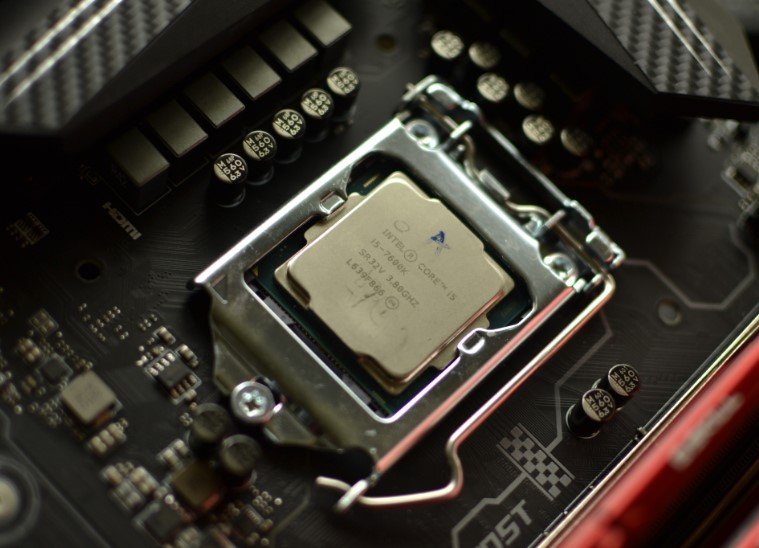Intel’s i5-7600K was left behind, but it’s quietly holding its own in 2025’s gaming world
When Microsoft published its compatibility list for Windows 11, the message was blunt: if your CPU’s not on the list, you’re out. That list left behind an entire generation of still-functional processors — and among the most notably excluded was Intel’s i5-7600K. For many, it felt like being told their perfectly good engine no longer worked just because the roads got repainted.
The irony? That very same chip is still quietly chewing through modern games — no hitches, no tears, no thermal meltdowns. And people are starting to talk.
A quiet workhorse that got ghosted by Redmond
The i5-7600K wasn’t some obscure chip. It was part of Intel’s Kaby Lake family — a best-seller in its time. Launched in early 2017, this quad-core processor became a staple in budget and mid-range gaming PCs. With its 4.2 GHz turbo boost and unlocked overclocking, it served countless gamers and hobbyists well.
But Microsoft decided it was time to put it out to pasture. Windows 11, they said, needed more secure hardware — specifically, CPUs that supported certain security features like TPM 2.0 and newer instruction sets.
Users were left scratching their heads.
“This thing still runs like a dream,” said Rich Edmonds, a hardware expert at XDA, whose brother’s PC with the 7600K was recently flagged as ineligible for a Windows 11 upgrade. “Microsoft wants me to throw away perfectly good silicon because it’s a few years old? That’s wild.”

Gaming tests: Old CPU, new tricks
Faced with the Windows 11 wall, Edmonds took a detour. Instead of forcing an OS upgrade or shelling out hundreds for a new CPU, motherboard, and RAM, he simply installed Linux. Then he booted up some games — you know, the real test.
The result? Smooth as butter.
-
Grand Theft Auto V: Still a riot on the 7600K. Even paired with a mid-range GPU, Edmonds reported no real performance hiccups. “I could storm Fort Zancudo and crash a stolen jet into a hill without a single stutter.”
-
Other popular games like The Witcher 3 and Rocket League also performed well — provided users weren’t chasing ultra settings or 240 Hz frame rates.
“It’s not going to beat a 13900K, obviously,” Edmonds noted. “But if you just want to game and don’t care about ray tracing or bragging rights, this chip’s still got plenty of gas.”
A bigger issue than just one chip
What’s happening with the 7600K is just one slice of a much larger pie. As Windows 11 tightens its compatibility rules, thousands — maybe millions — of PCs that still perform fine are now officially “obsolete” in Microsoft’s eyes.
Here’s how things stack up for the i5-7600K today:
| Metric | Value |
|---|---|
| Release Year | 2017 |
| Base Clock Speed | 3.8 GHz |
| Turbo Boost | 4.2 GHz |
| Cores/Threads | 4 / 4 |
| Windows 11 Compatible? | No |
| Average Used Price (2025) | ~$60 USD |
| Common Use Today | Light gaming, daily computing |
The chip lacks hardware-based security features Microsoft considers essential. But critics argue that the decision feels arbitrary and more like an upgrade nudge than a true necessity.
One developer on GitHub, under the handle “TomRidgeBack,” wrote: “TPM 2.0 doesn’t magically stop ransomware. It’s just a layer — one that could be implemented in software for most use cases. Forcing people to toss usable systems is wasteful.”
Linux is quietly winning in the shadows
This might be where Linux sneaks in with a smirk. It doesn’t care if your CPU was made in 2017 or last Tuesday. It just wants to run.
Edmonds said switching to Linux was easier than expected. “We went with Pop!_OS. It took less than an hour to set up and get Steam installed. No nags, no update anxiety, no unsupported hardware alerts. It just worked.”
That’s not a small thing. While Linux gaming has long lived in the margins, compatibility layers like Proton and tools like Lutris are changing the story. Steam Deck’s success only added fuel to the open-source fire.
And for people who just want to play some games without being told their hardware is out of date, Linux is looking more attractive by the day.
Microsoft’s strategy: security or sales?
At the heart of the debate is a simple question: Is this really about security — or sales?
To be fair, Windows 11 does offer real security benefits. Virtualization-based security (VBS), Hypervisor-Protected Code Integrity (HVCI), and TPM 2.0 support can help reduce the attack surface. But it’s also true that the bulk of ransomware and phishing attacks don’t care what CPU you’re using — they care if you click that shady email.
Some tech enthusiasts believe Microsoft is playing both sides. Boost security and encourage hardware sales? Sure. And in a world where OEMs and chipmakers rely on frequent refresh cycles, that’s not exactly surprising.
Still, it leaves a bitter taste.
“This chip isn’t dead. It’s just ignored,” said a Reddit user under the handle “756bpm,” who’s still rocking the 7600K for gaming and work. “It’s like being told you can’t come to the party because you didn’t buy new shoes.”








